In this article, we will see how to fix the Mouse lag when connected to the external monitor. On Windows 11/10 computers, we can connect multiple monitors to boost our productivity. But if the mouse starts lagging when an external monitor is connected to the system, it worsens the situation instead of boosting productivity. If you are in such a situation, you can follow the suggestions in this article.
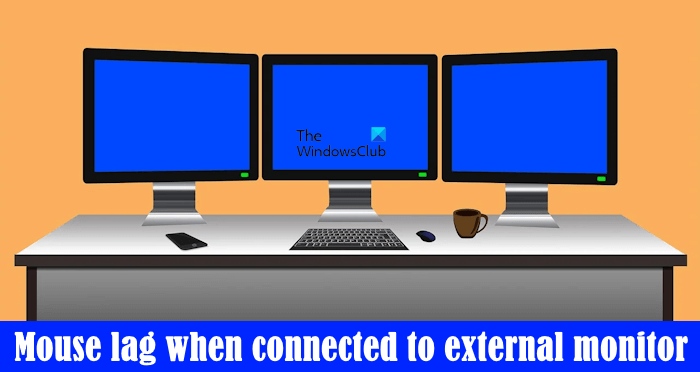
Why does my mouse lag on my external monitor?
There can be many reasons why your mouse lags on the second monitor. Sometimes, the incorrect mouse settings cause such types of problems, whereas, in some cases, it is caused due to corrupted or outdated mouse and graphics card drivers. Moreover, sometimes, the cable used to connect the external display is responsible for the mouse lag. In such a case, replacing the cable fixes the issue.
Fix Mouse lag when connected to external monitor
Use the following solutions to fix mouse lag when connected to an external monitor. Before proceeding, we suggest you check for Windows Update and install the same if available.
- Use a USB mouse
- Reinstall your mouse driver
- Disable the mouse pointer shadow
- Change your mouse pointer scheme
- Update or reinstall your graphics card driver
- Repair your system files
- Change the monitor refresh rate
- Change the color mode
- Change your cable
- Is your mouse connected through a USB hub?
Below, we have explained all these fixes in detail.
1] Use a USB mouse
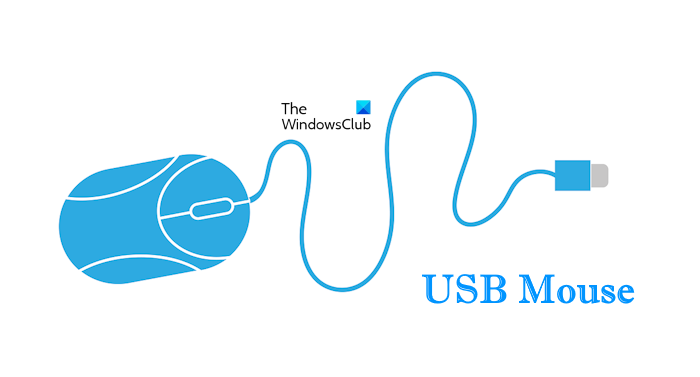 If you are using a wireless mouse, we suggest you disconnect it and connect a USB mouse to your system. Lagging issues are more on wireless or Bluetooth mice as compared to the wired or USB mice.
If you are using a wireless mouse, we suggest you disconnect it and connect a USB mouse to your system. Lagging issues are more on wireless or Bluetooth mice as compared to the wired or USB mice.
Read: How to perform Mouse Latency Test
2] Reinstall your mouse driver
The problem may be occurring due to the corrupted mouse driver. We suggest you reinstall your mouse driver. The following steps will guide you on this:
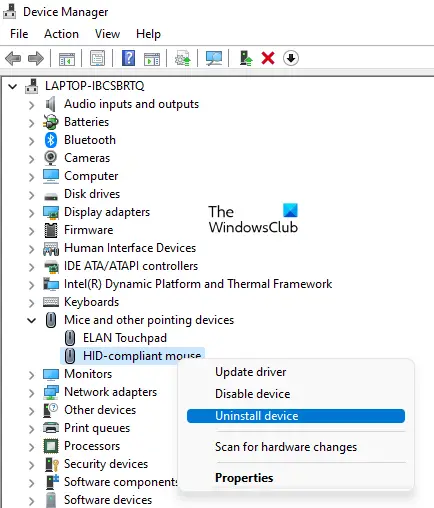
- Open the Device Manager.
- Expand the Mice and other pointing devices branch.
- Right-click on your mouse driver and select Uninstall device.
- Restart your computer.
Windows will automatically install the missing mouse driver on restart.
Read: Second Monitor lags when playing games
3] Disable the mouse pointer shadow
Some users were able to fix the issue after disabling the mouse pointer shadow. Open your mouse settings and see if this option is enabled for your mouse. If yes, disable it and see if it helps. Go through the following instructions:
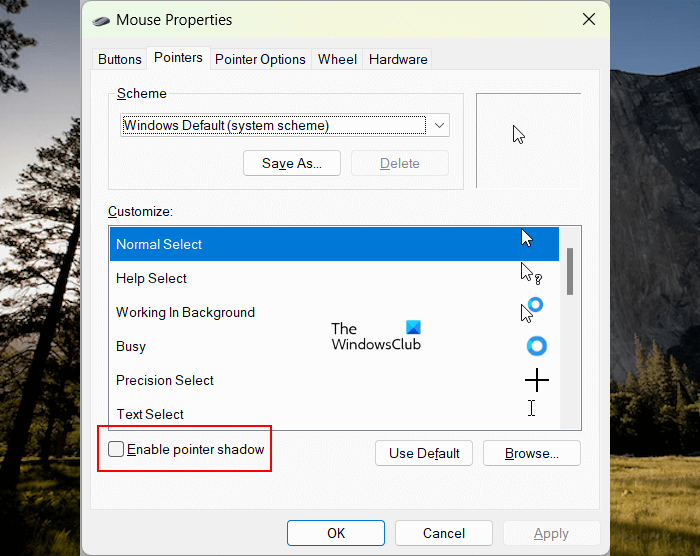
- Open the Control Panel.
- Select Large icons in the View by mode.
- Click Mouse.
- The Mouse Properties window will open. Go to the Pointers tab.
- Uncheck the Enable pointer shadow checkbox.
- Click Apply and then click OK.
- Restart your computer.
Now, check if the problem persists.
4] Change your mouse pointer scheme
Changing the mouse pointer scheme has worked for some users. You should also try this. The steps to change the mouse pointer scheme are:
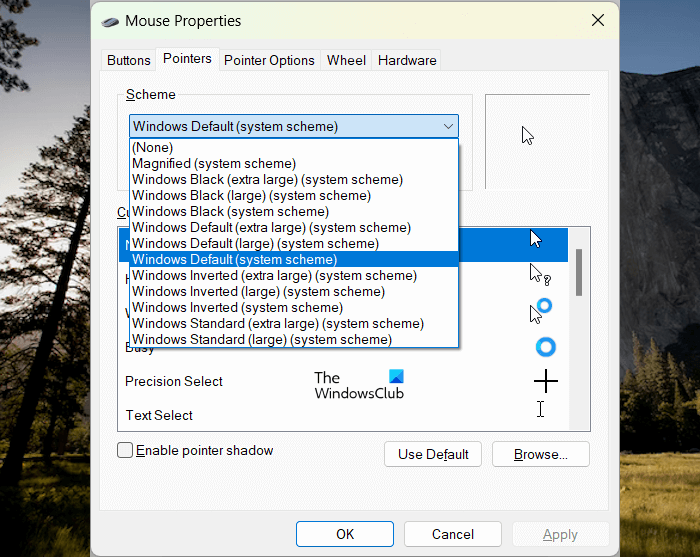
- Open the Control Panel.
- Type mouse in the search box and select Mouse from the search results.
- In the Mouse Properties window, go to the Pointers tab.
- Select another scheme from the drop-down.
- Click Apply and then click OK.
5] Update or reinstall your graphics card driver
One possible cause of the mouse lag after connecting the second monitor to your system is the outdated graphics card driver. You should update the graphics card driver. You have to download the latest version of your graphics card driver from the manufacturer’s website and then install it manually.

Alternatively, you can also update your graphics card driver by installing dedicated software based on the make of your computer, like HP Support Assistant, MyASUS app, DellSupportAssist, etc.
6] Repair your system files
Corrupted system files can also cause such types of problems. Windows has built-in command line tools to repair the corrupted system image files. Run System File Checker to repair your system files. You have to launch the Command Prompt as an administrator, otherwise, you will receive an error.
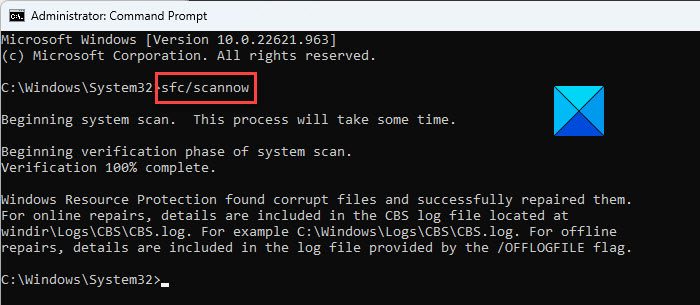
After running the SFC scan, run the DISM scan.
Let it be completed successfully. After that, check the status of the issue.
7] Change the monitor Refresh rate
You can also try to change your monitor Refresh rate. Change the refresh rate of the monitor on which your mouse lags. The following steps will help you with that:
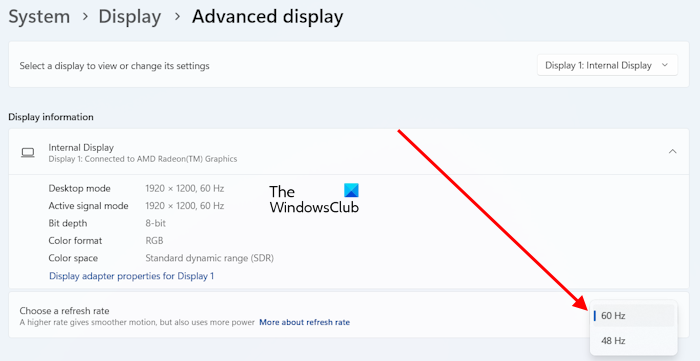
- Open Windows 11/10 Settings.
- Go to System > Display > Advanced display.
- Select the problematic display from the drop-down.
- Click on the Choose a refresh rate drop-down and select another refresh rate.
This fix has worked for some users.
Read: Monitors showing different colors in dual monitor setup.
8] Change the color mode
If changing the monitor refresh rate did not fix the problem, changing the color mode of the affected display can help. The steps to change the color mode of your monitor are written below:
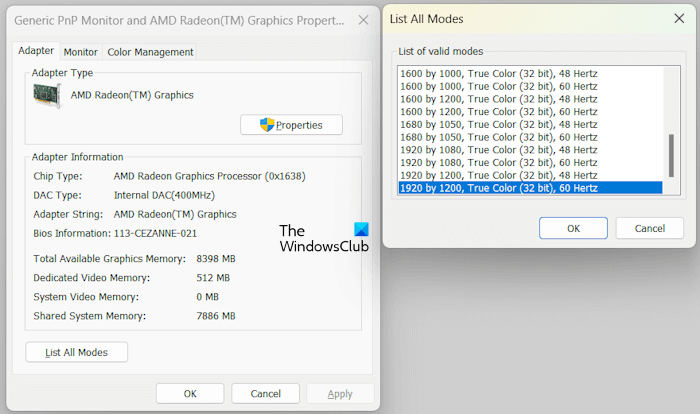
- Open Windows 11/10 Settings.
- Go to System > Display > Advanced display.
- Select the display from the drop-down.
- Click on the Display adapter properties link.
- Click on the List All Modes button.
- Select a different color mode and click OK.
- Click Apply and click OK.
Check if this brings any changes.
9] Change your cable
It might be your cable that is causing your mouse to lag on the monitor. Some users confirmed that the issue was fixed after changing the cable used to connect the display to their PC. You can also try this (if another cable is available).
According to the feedback, replacing the USB C to DisplayPort cable with the USB C to HDMI fixed the issue. This fix applies to the users whose computers have the USB C port(s).
10] Is your mouse connected through a USB hub?
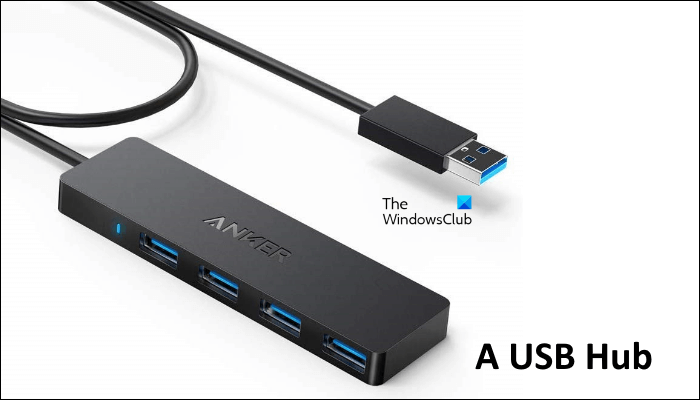
Have you connected your mouse to your computer via a USB Hub? If yes, disconnect your mouse from it and connect it directly to the USB port of your system. Now, check if it lags this time or not.
That’s it. I hope this helps.
Read: Third monitor not detected in Windows.
How do I fix a glitchy cursor?
The glitchy customer issues, like mouse cursor freezing or crashing issues, mouse cursor flickering issues, etc., can be caused due to several reasons. The most common cause is the corrupted mouse driver. You can try some fixes, like updating your graphics card driver, updating or reinstalling your mouse driver, troubleshooting in a Clean Boot state, etc.
Read next: Wallpaper on the second monitor turns black after logging in.
Leave a Reply